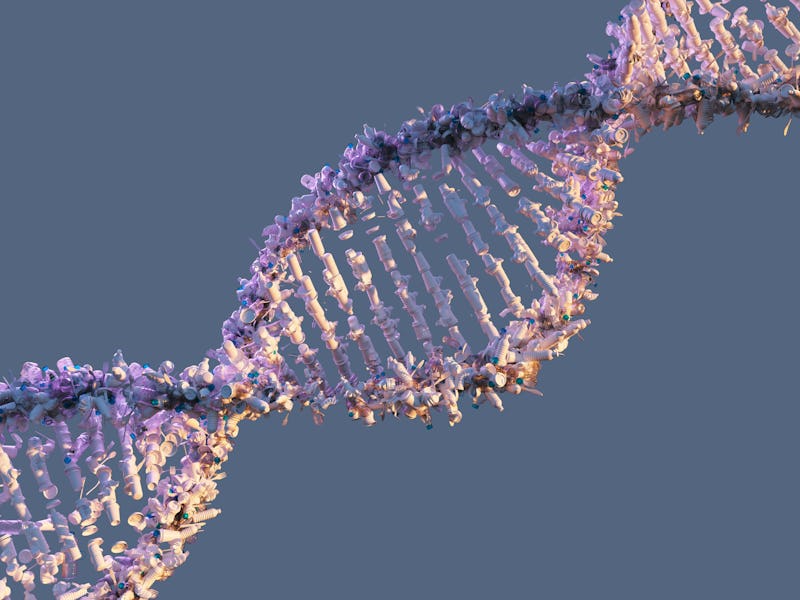Do genetics determine how you respond to psychedelics? A new study suggests they might
"Some of the differences here are pretty big."

Research into psychedelics like LSD and psilocybin as treatments for substance use disorder, depression, anxiety, and PTSD is incredibly promising. The evidence is so compelling that some states are decriminalizing the possession of these drugs and legalizing their therapeutic use, even as they remain under the federal government’s Schedule 1 classification.
New drugs for mental health and substance use disorders are desperately needed. An estimated 30 percent of people with Major Depressive Disorder don’t respond to traditional antidepressants. In March of this year, the CDC recorded the 12-month period with the highest number of drug-related deaths in United States history.
As promising as they are, researchers are still teasing apart the mechanisms through which they work. In particular, they’ve found that people seem to respond differently to various psychedelics. Understanding why this is could help researchers identify the optimal psychedelic treatment for a given person.
In July, researchers from the University of North Carolina Chapel Hill published a study in the journal ACS Chemical Neuroscience that may help us better understand why some people have a therapeutic response to certain psychedelic substances and others don’t. The work could not only serve as a foundation for better understanding these differences but also help answer outstanding questions about the neurobiology of psychedelics.
Background— Psychedelics drugs like LSD, psilocybin, DMT, and mescaline are called serotonergic psychedelics. These are in a family of organic compounds called tryptamines and are similar in structure to serotonin, which at least partially explains their affinity for serotonin receptors. While the exact mechanism of action is not completely understood, we know that when these compounds bind to a subtype of serotonin receptor called the 5-HT2a receptor, it sets off a cascade of actions responsible for the changes in cognition, emotion, and perception characteristic of psychedelic “trips.”
Research into psychedelics like LSD and psilocybin as treatments for substance use disorder, depression, anxiety, and PTSD is incredibly promising.
However, simply binding to this receptor isn’t “sufficient for mediating the effects at the receptor,” Bryan Roth, lead of the National Institute of Health’s Psychotropic Drug Screening Program and one of the study's authors, tells Inverse. “The receptor also has to interact with these proteins called G-proteins.”
The 5-HT2A receptor is in a family of receptors called G-protein coupled receptors (GPCR); G-protein coupled receptors (GPCR) are the largest family of proteins encoded in the human genome. G-proteins respond to various stimuli outside a cell and then activate signaling pathways, which result in activity within a cell.
As in the rest of our bodies, there are genetic variations to these 5-HT2A receptors. Previous research identified seven common genetic variations of the 5-HT2A receptor DNA sequence. Those variations — called single nucleotide polymorphisms — result in a difference of a single amino acid in the DNA sequence. These genetic variations are associated with varying responses to other psychotropic drugs, specifically six FDA-approved antipsychotics. (Roth was also an author of the 2005 study looking at those varied responses.)
Because LSD, psilocybin, DMT, and mescaline are known to interact with the same receptor, Roth and his colleagues hypothesized that these slight but common genetic variations might play a role in the affinity these substances have for a 5-HT2A receptor.
What they did— Roth and his colleagues had previously developed a technology where they could evaluate the ability of the receptor to interact with these proteins. “Then we just applied that technology to this particular problem,” he says. “It’s just a way to precisely quantify the receptors' ability to interact with the transducer proteins after a drug binds to them.”
Cells expressing the different variations of the 5-HT2A receptor were grown in a petri dish. The researchers then applied the four different psychedelic substances to the cells. Using a biofluorescence technique, researchers could track the activity within the cell following the application of one of the four substances.
The researchers also looked at the activity of β-arrestin (βArr) proteins, which are also involved in regulation and signaling outcomes. For example, previous research suggests that when researchers remove β-arrestin proteins in mice, the mice have a greatly diminished response to LSD. Researchers tracked the in vitro response at 5 minutes, 30 minutes, 1 hour, 2 hours, and 3 hours following the administration of the different psychedelics. As a control, the researchers used the wild-type 5-HT2A receptor (i.e., without genetic variations).
The researchers found that the genetic variations did affect how the receptor interacted with the drug.
Notably, all the experiments in the study were done in vitro, meaning outside the body. The study wasn’t looking at how the genetic variations changed the potential therapeutic effects of the four different drugs. “That would be another study entirely,” Roth says. However, it yielded some interesting results that suggest these genetic differences could play a role in how someone responds to different psychedelic compounds.
What they found— The researchers found that the genetic variations did affect how the receptor interacted with the drug. For example, one of the variations had a decreased response to psilocin, a psilocybin metabolite. A different genetic variation had a decreased response to two of the psychedelic compounds tested. Notably, none of the genetic variations responded to the compounds the way the wild type did. Further, no genetic variation had the same effect on all the psychedelics.
What it means for the future— While the researchers can’t say definitively what this means for psychedelic therapy, Roth says he hopes their data will be used by clinical researchers to retrospectively compare a patient’s response to one of these compounds with their individual genetic variations.
“I suspect [the genetic vaariations] will have some effect,” he says. “Some of the differences here are pretty big. So it would be surprising if that didn’t translate somehow to effect.”